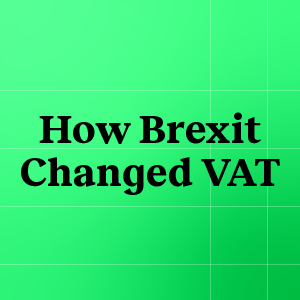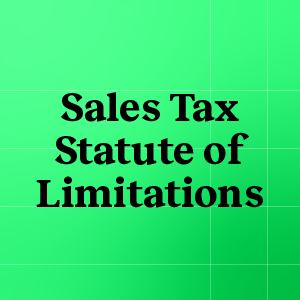Changes to VAT in 2021
by December 6, 2021
This is a guest post from our partners at SimplyVAT.com, highlighting key changes in Value Added Tax, a consumption-based tax implemented in approximately 160 countries worldwide and common in the European Union.
As we reach four months since the EU VAT reforms came into effect, we wanted to look back on the changes and what the ecommerce European VAT landscape looks like today. Ecommerce has boomed throughout 2021, which has encouraged lots of online sellers to embark on EU-wide expansion. However, alongside these exciting business advancements, the July EU VAT Ecommerce Package introduced new compliance legislation that sellers have had to adapt to simultaneously.
The new rules are intended to ensure VAT is always paid where consumers are located, but to mitigate the potential added administrative costs, a set of simplification schemes were introduced. These schemes, namely One Stop Shop (OSS) and Import One Stop Shop (IOSS), can significantly reduce the time taken to report VAT across the EU. These can also be used by online marketplaces who have been given an increased role in collecting VAT from EU-based customers in certain scenarios.
The OSS and IOSS Schemes
The OSS scheme, as an expansion of the previous Mini One Stop Shop (MOSS), allows companies to account for VAT in a single online interface, rather than registering in each EU Member State where they make B2C supplies.
OSS consists of two schemes:
Union OSS – this scheme can be used by EU-based businesses to report VAT due on intra-EU sales of goods and services and by non-EU based businesses to report VAT due on physical goods only.
Non-Union OSS – this scheme can be used by non-EU established businesses to report VAT due on B2C sales of services & digital goods only.
The IOSS scheme allows businesses, including online marketplaces, to report the import VAT due on their B2C sales of goods imported into the EU with a consignment value that does not exceed EUR 150. This scheme is available via an online portal with a single monthly return to account for the VAT due on eligible sales.
If consignments exceed this EUR 150 threshold, standard importation and customs procedures will apply.
No more Distance Selling Thresholds
Under the reformed EU VAT rules, State-by-State specific Distance Selling Thresholds no longer exist. This will mean that EU-based businesses holding stock in several EU countries and selling cross-border, as well as any non-EU based businesses selling into the EU, will need to charge VAT in the country where the customer is established from the first sale. This can be through a VAT registration in each country where customers are based or an OSS registration.
Marketplace responsibilities
Marketplaces are now expected to take on added responsibility when it comes to collecting and reporting VAT from EU consumers on behalf of online sellers. Currently, marketplaces are expected to fulfil this role in certain scenarios, these scenarios are as follows:
- Distance sales of goods imported into the EU with a value up to EUR 150
- Supply of goods to EU consumers when the goods are already located within the EU and the seller is based outside of the EU, irrespective of the value of the goods
If one or more of these conditions are met, the marketplace will then be considered the ‘deemed supplier’ of the goods and the seller will be seen to be making a zero-rated supply to the marketplace itself.
It’s important to note that even when the marketplace takes on more responsibility for the collection of VAT, holding stock in an EU member state where your business is not established will still trigger a VAT obligation for both EU and non-EU based businesses.
Selling through an online website
If you are a non-EU business who holds stock within the EU for sale via your own website, you will still need a local VAT registration in the location where your goods are stored and dispatched. As well as this, you will be required to have a Union OSS registration to account for all intra-EU cross-border sales made through your online website.
If you are a non-EU business selling on their own website who holds stock outside of Europe for sale to EU customers, your VAT obligation will directly correlate with the value of your consignments. If your consignments do not exceed the EUR 150 limit, VAT will be due where your customer is based, and you will be eligible to report this via the IOSS scheme. However, if the value of your consignments exceeds this threshold, normal customs procedures will apply, and import VAT will need to be paid upon importation by the Importer of Record.
Alternatives to the new VAT schemes
In the case of OSS, any business holding stock within the EU for sale to EU consumers will need to be VAT registered in that location and have a VAT registration in each country where their customers are based. An OSS registration could account for much of the VAT due in this scenario, removing the need for these businesses to register in each member state which can be costly and make VAT reporting time-consuming.
If an importing business chooses not to use IOSS or has consignments that exceed the EUR 150 threshold, standard customs procedures will apply, and an Importer of Record (IOR) will need to be appointed. Most businesses assume the role of IOR to prevent the end consumer being charged additional customs fees which can harm customer experience and brand perception.
If you decide to take on the role of IOR you will need to remit the VAT to the relevant tax authorities in the EU member state where your final customer resides. This will also require a VAT registration in this location to recoup the import VAT paid. Furthermore, you will then need to record the transfer of goods via your local VAT return (if your customer is in the same country as your goods) or report this via the Union OSS (if your customer resides in another EU country to your goods).
How can I find support?
SimplyVAT.com can assist your business to review your supply chain and know if you are liable for VAT registration and reporting. Their expert International VAT Consultants can help guide you through the schemes and determine if these are suitable for you. You can also try SimplyVAT.com’s quick quiz now to find out which scheme may be best for your business.
They can help you in registering for any of the schemes mentioned and offer VAT rate consultancy so you understand exactly which VAT rates you should be applying to your products and services.
Get in touch with SimplyVAT.com today and schedule a call to determine your VAT requirements!








